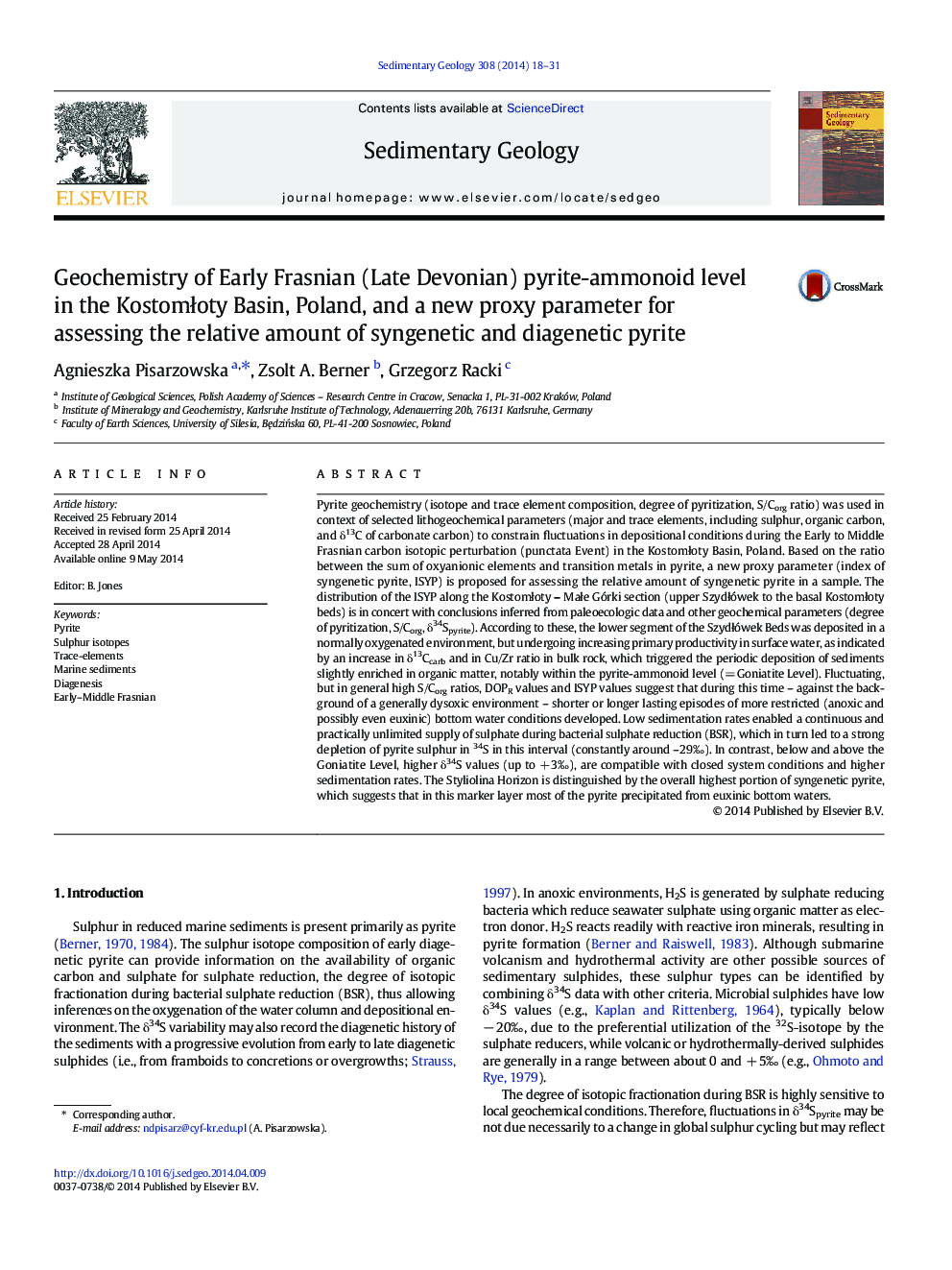| کد مقاله | کد نشریه | سال انتشار | مقاله انگلیسی | نسخه تمام متن |
|---|---|---|---|---|
| 4689427 | 1636055 | 2014 | 14 صفحه PDF | دانلود رایگان |
عنوان انگلیسی مقاله ISI
Geochemistry of Early Frasnian (Late Devonian) pyrite-ammonoid level in the KostomÅoty Basin, Poland, and a new proxy parameter for assessing the relative amount of syngenetic and diagenetic pyrite
دانلود مقاله + سفارش ترجمه
دانلود مقاله ISI انگلیسی
رایگان برای ایرانیان
کلمات کلیدی
موضوعات مرتبط
مهندسی و علوم پایه
علوم زمین و سیارات
فرآیندهای سطح زمین
پیش نمایش صفحه اول مقاله

چکیده انگلیسی
Pyrite geochemistry (isotope and trace element composition, degree of pyritization, S/Corg ratio) was used in context of selected lithogeochemical parameters (major and trace elements, including sulphur, organic carbon, and δ13C of carbonate carbon) to constrain fluctuations in depositional conditions during the Early to Middle Frasnian carbon isotopic perturbation (punctata Event) in the KostomÅoty Basin, Poland. Based on the ratio between the sum of oxyanionic elements and transition metals in pyrite, a new proxy parameter (index of syngenetic pyrite, ISYP) is proposed for assessing the relative amount of syngenetic pyrite in a sample. The distribution of the ISYP along the KostomÅoty - MaÅe Górki section (upper SzydÅówek to the basal KostomÅoty beds) is in concert with conclusions inferred from paleoecologic data and other geochemical parameters (degree of pyritization, S/Corg, δ34Spyrite). According to these, the lower segment of the SzydÅówek Beds was deposited in a normally oxygenated environment, but undergoing increasing primary productivity in surface water, as indicated by an increase in δ13Ccarb and in Cu/Zr ratio in bulk rock, which triggered the periodic deposition of sediments slightly enriched in organic matter, notably within the pyrite-ammonoid level (= Goniatite Level). Fluctuating, but in general high S/Corg ratios, DOPR values and ISYP values suggest that during this time - against the background of a generally dysoxic environment - shorter or longer lasting episodes of more restricted (anoxic and possibly even euxinic) bottom water conditions developed. Low sedimentation rates enabled a continuous and practically unlimited supply of sulphate during bacterial sulphate reduction (BSR), which in turn led to a strong depletion of pyrite sulphur in 34S in this interval (constantly around -29â°). In contrast, below and above the Goniatite Level, higher δ34S values (up to + 3â°), are compatible with closed system conditions and higher sedimentation rates. The Styliolina Horizon is distinguished by the overall highest portion of syngenetic pyrite, which suggests that in this marker layer most of the pyrite precipitated from euxinic bottom waters.
ناشر
Database: Elsevier - ScienceDirect (ساینس دایرکت)
Journal: Sedimentary Geology - Volume 308, 1 July 2014, Pages 18-31
Journal: Sedimentary Geology - Volume 308, 1 July 2014, Pages 18-31
نویسندگان
Agnieszka Pisarzowska, Zsolt A. Berner, Grzegorz Racki,